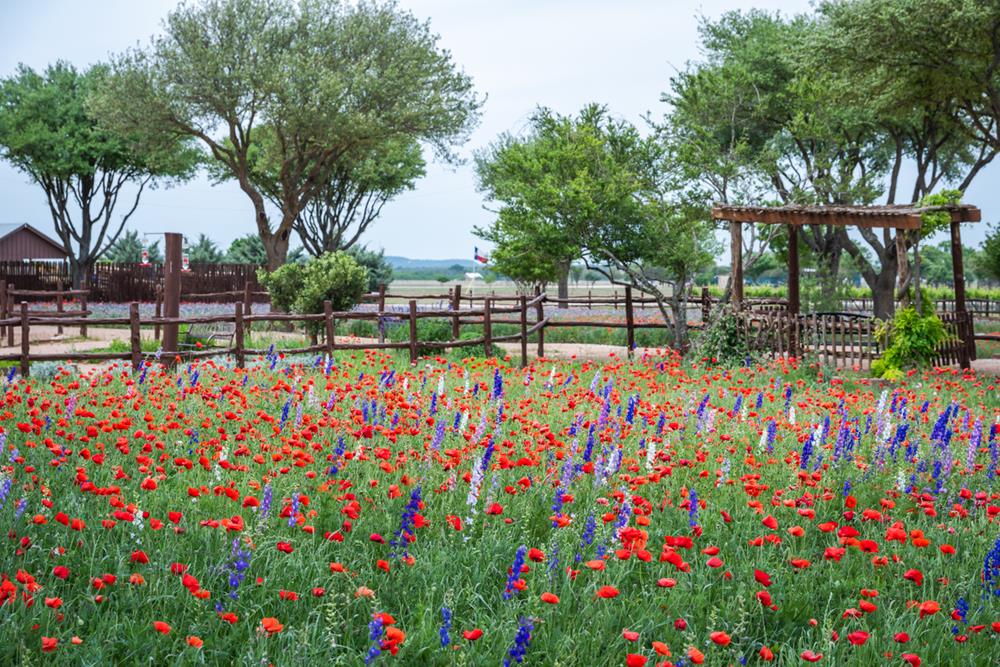San Antonio Community Gardens You Can Join

San Antonio offers numerous community gardens you can join, including Gardopia Gardens with Saturday workdays, Beacon Hill's monthly second-Saturday sessions, and Landa Community Garden's weekday-morning gatherings.
You'll find options fitting any schedule, from by-arrangement volunteering at SAMMinistries' Transitional Living and Learning Center garden to special group events at various locations. Most gardens require an application, orientation, and a commitment to volunteer hours.
Discover how these green spaces are transforming neighborhoods while addressing the city's food access challenges.
East Side Garden Initiatives: Gardopia and Garcia Street Urban Farm
Founded in May 2015, Gardopia Gardens has helped transform San Antonio's East Side through garden education and wellness programming. You'll find its flagship site at 619 N. New Braunfels Ave., featuring raised beds, composting, and sustainable practices that double as teaching tools.
Beyond growing food, Gardopia emphasizes community engagement through year-round workshops for all ages. Its three-pillar focus—education, health, and environment—supports a holistic vision for neighborhood revitalization.
Just a few blocks away, Garcia Street Urban Farm (218 Garcia St.)—a partnership with local institutions—demonstrates regenerative urban farming, hosts classes, and connects neighbors to affordable, fresh produce.
Together, these East Side hubs model how small urban farms can improve health, skills, and local food resilience.
Community Garden Volunteer Opportunities for Every Schedule
Whether you're a weekend warrior or a weekday early bird, San Antonio's gardens offer volunteer options to fit nearly any routine. Gardopia Gardens hosts Saturday morning workdays, while Beacon Hill Community Garden gathers volunteers monthly (often on second Saturdays). Prefer weekdays? Landa Community Garden organizes morning sessions led by its volunteer stewards.
Flex time extends beyond set schedules—SAMMinistries welcomes garden volunteers by arrangement, and Gardopia accommodates special group events outside regular hours. The growing Garden Army network helps keep sites cared for throughout the year.
Skills-based roles abound, too: the San Antonio Botanical Garden engages Garden Guides and horticulture helpers, while Bexar County Master Gardeners plug in across the city—from children's vegetable programs to culinary-garden docent work. At Landa, you can contribute as a planner, bed tender, or waterer—whatever your comfort level, there's a good-fit role.
How Gardens Are Addressing San Antonio's Food Access Challenges
Despite being Texas's second-largest city, San Antonio continues to face notable food-access gaps; a widely cited estimate found about 28% of residents lived in areas with limited healthy-food access a decade ago, and many neighborhoods still struggle today. Community gardens have become part of the solution, especially inside Loop 410, where supermarkets can be sparse.
These sites provide low-cost produce alongside nutrition education, cooking demos, and youth programs that support healthier choices. Examples like the International Community Garden and Jardín de la Esperanza show diverse, neighborhood-driven approaches. Citywide, dozens of gardens operate in areas with higher SNAP usage and historic disinvestment, particularly on the South and West sides.
Engagement strategies link gardens with initiatives such as Healthy Neighborhoods and Healthy Corner Stores, creating multi-layered approaches that address both immediate food needs and long-term community health.
Getting Started: First Steps to Join a Community Garden
If you're ready to dig in, joining a garden is straightforward with a little preparation. Begin by finding sites near home or work so regular visits are realistic—proximity helps you succeed and strengthens neighborhood ties.
- Search municipal and nonprofit directories for gardens currently accepting new members.
- Review membership requirements, which may include applications, nominal plot fees, or background checks for school-adjacent sites.
- Attend an orientation covering garden rules, water use, composting, and shared-space etiquette.
- Explore roles beyond tending a bed—education, outreach, or events committees often need fresh energy.
Most gardens ask adult members to log minimum volunteer hours and follow organic or low-input practices to keep the soil, pollinators, and produce healthy.
Beyond Growing: Educational Programs in San Antonio's Gardens
San Antonio's gardens have blossomed into living classrooms. The San Antonio Botanical Garden offers TEKS-aligned school programs and pollinator lessons, plus robust volunteer and family activities across the seasons.
Students at the University of the Incarnate Word engage in hands-on wellness and sustainability projects through the campus community garden. Gardopia Gardens runs weekly workdays and multi-week series on food self-sufficiency, while Bexar County Youth Gardens equips educators to turn schoolyards into outdoor classrooms.
Homeschool families find regular, standards-friendly activities that blend plant science, ecology, and art. Whether you're a parent, teacher, or curious neighbor, these programs build practical skills—and help grow the next generation of garden-savvy San Antonians.


